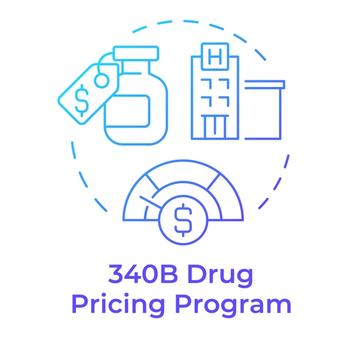
Value-based Outcomes Contracts Can Address High-Cost Gene Therapies
Javier Gonzalez, Pharm.D., at Abarca Health, talks about how value-based pricing arrangements can align incentives among stakeholders for specialty disease management.
Value-based contracting offers one answer to how to provide coverage and access to high-cost, specialty medications, including gene and cell therapies, said Javier Gonzalez, Pharm.D., chief growth and commercial officer, at Abarca Health. Payers and PBMs, he said, continue to seek value-based arrangements with drug manufacturers as an alternative method for spend/trend management.
“We have to find a way keep these drugs affordable, accessible and available to the membership,” he said in an interview with Formulary Watch.
At the second annual Abarca Forward, a meeting sponsored by the PBM and held Feb. 15-17, 2023, in Puerto Rico, Gonzalez and panelists discussed how value-based pricing arrangements can align incentives among stakeholders for specialty disease management.
“PBMs must continue working on building out innovative clinical and alternative financial models that connect specialty pharmacies, case management, and disease management capabilities to ensure they can leverage the outcomes data necessary to support the shift to value based and alternate payment models," Gonzalez said. "These initiatives are sorely needed to help combat the rapid increase in ultra-high-cost specialty medication. In the past, managing specialty pharmacy was administratively burdensome and fragmented — and PBMs didn’t have the ability to leverage data interoperability to connect at the point of prescription and deliver a higher quality, lower net cost patient experience.”
Specialty drug management, however, continues to be challenging, he said. Specialty medicines will represent about 43% of global spending in 2027 and 56% of total spending in developed markets, according to a recently released
While oncology and autoimmune disease will continue to drive the volume growth in specialty arena, rare diseases — these rare disease conditions are where most of the cell and gene therapies will initially target — will see the largest single growth in per member per month over the next four years, Gonzalez said.
For example, Hemgenix (etranacogene dezaparvovec-drlb), which was approved by the FDA in November 2022 as a one-time treatment for patients with hemophilia B, costs $3.5 million — the most expensive drug ever to launch. At the time of its approval, a spokesperson for the therapy’s manufacturer, CLS Behring, told Formulary Watch that Hemgenix was priced to provide value and will generate cost savings in the form of reduced annual bleed rates and reduced or eliminated use of prophylactic therapy.
Gonzalez said that value-based models that include contracts that seek to minimize financial risk and improve cost predictability (e.g., subscription models, annuities model) and contracts based on outcomes, risk, or both (e.g. milestone or warranty based models) will help payers to managed these high-cost therapies.
These types of agreements are expected to be more common with the gene and cell therapy products expected to be launched over the next five years because there is considerable R&D activity in this area. IQVIA expects that 55 to 65 new cell, gene and RNA-based therapies will launch by 2027 and reach total spending of $27 billion in five years.
Gonzalez said these payment strategies can work with one-time cell and gene therapies. “There are several models (milestone, warranty, and annuities/pay over time) that try to address the durability of single-dose therapies,” he said. “In two of these approaches, payment is tied to the drugs’ ability to impart sustained value/benefit and if that benefit is lost, the drug manufacturer reimburses the payer the amount commensurate with the lost value or benefit. The other approaches focus on flexibility in payment options to avoid the large lump sum payments.”
He pointed to several currently available outcomes-based agreements. One is for Novartis’ Zolgensma (onasemnogene abeparvovec-xioi), which was approved in May 2019 to treat patients with spinal muscular atrophy, a progressive disease of the nerve cells. Zolgensma is a gene therapy that provides a functional copy of the SMN gene. The one-time treatment costs $2.1 million. It was launched with an option to pay over five years and an option for an outcomes-based agreement.
In a more recent example, Bluebird bio’s Zynteglo (betibeglogene autotemcel) to treat patients with beta thalassemia, was approved in August 2022 with a $2.8 million price. Bluebird bio’s outcomes program includes a guarantee to reimburse contracted commercial and government payers up to 80% of the cost of the therapy if a patient fails to achieve and maintain transfusion independence up to two years following infusion. In phase 3 trials, all patients who achieved transfusion independence have remained transfusion free, the company pointed out.
Gonzalez said that reinsurance and stop loss products specific to gene and cell therapies are also common. “Some self-insured employers who carve out this benefit will have the option have a stop-loss and reinsurance approach.”
Newsletter
Get the latest industry news, event updates, and more from Managed healthcare Executive.





















































